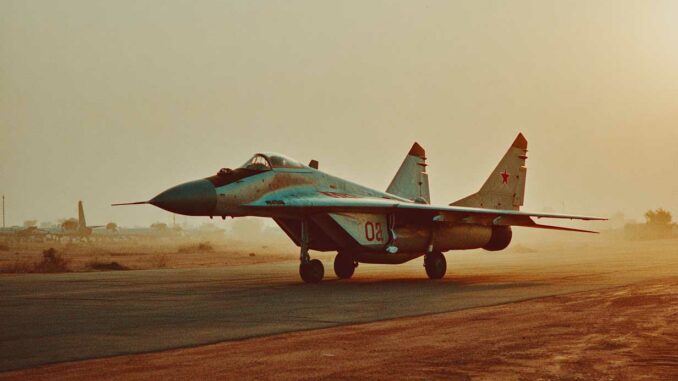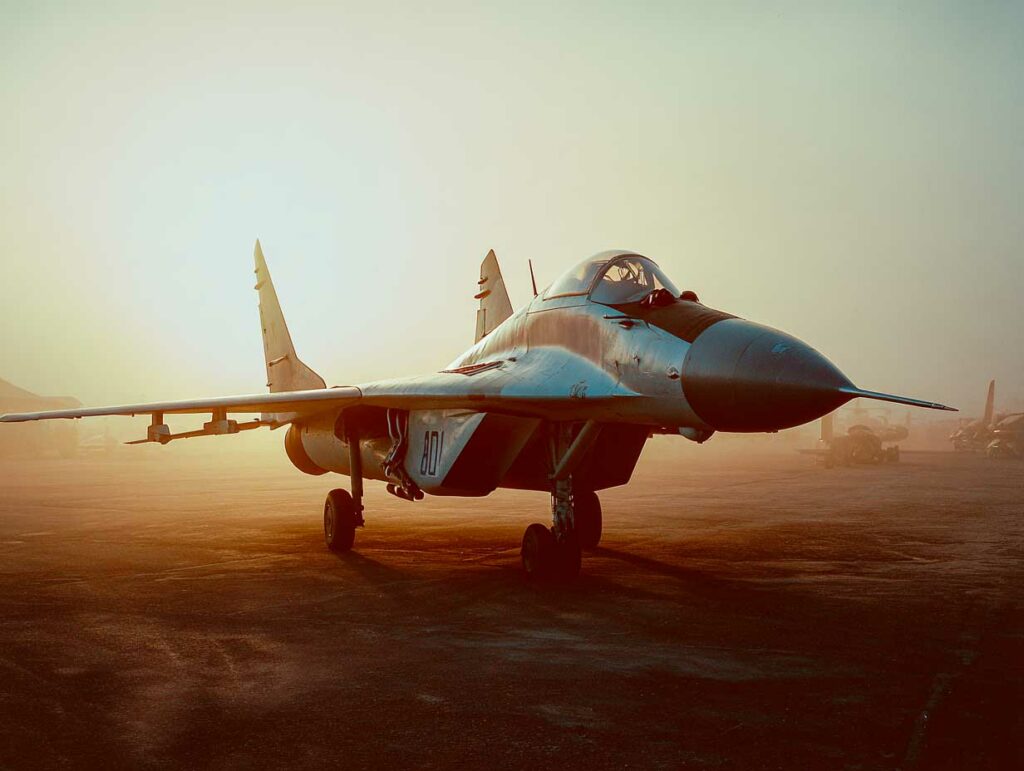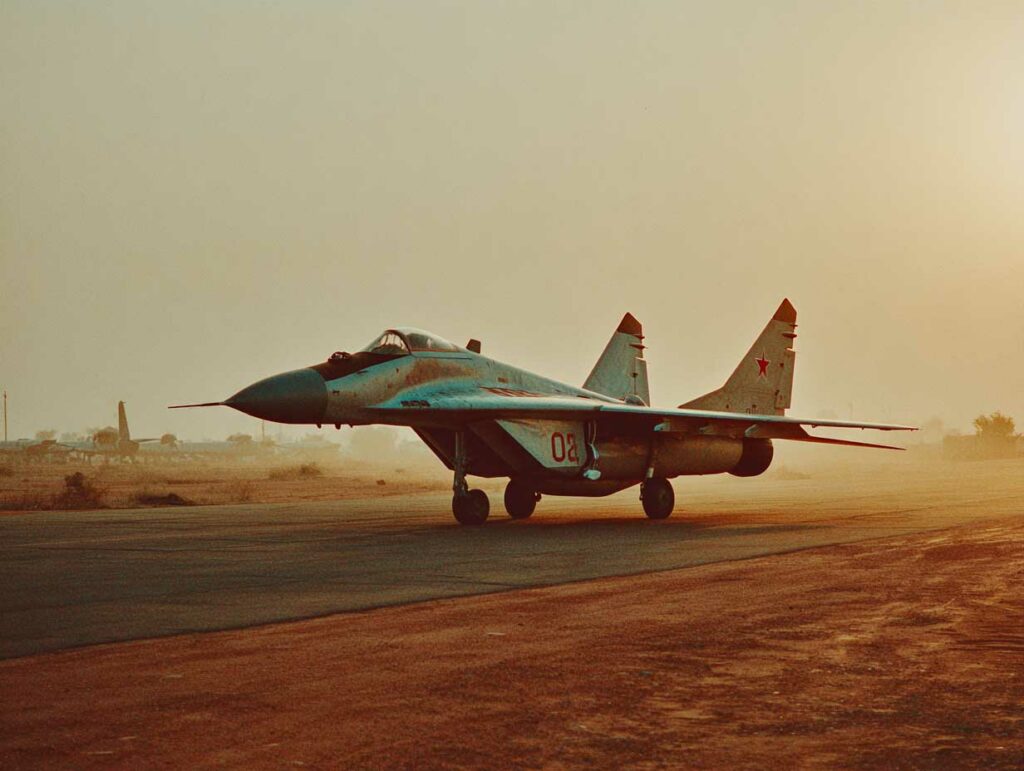
The Russian army is focusing its resources on Ukraine, neglecting the maintenance of its aircraft delivered to Africa, which is damaging its industrial credibility.
The conflict in Ukraine, now in its fourth year, is putting increasing pressure on the Russian Federation’s logistical, industrial, and human resources. This situation has tangible repercussions on Moscow’s ability to honor its international defense commitments, particularly in Africa. Several Russian fighter jets recently delivered to African partners, including Mali, are now grounded due to a lack of maintenance, spare parts, or technical assistance. This phenomenon is not marginal: it directly affects Russia’s credibility as a reliable arms supplier in a global market that has become more competitive than ever.
In the short term, the Russian air force has requisitioned most of the production, repair, and technical support resources for its own use, to the detriment of foreign customers. The logistical support promised under the contracts appears to have been partially or totally suspended. This loss of operational availability particularly affects MiG-29, Su-25 and attack helicopters delivered to partner countries in 2021 and 2022.
This deterioration in Russian military after-sales service comes at a time when Russia is seeking to consolidate its security ties with African states to compensate for its diplomatic isolation. However, the inability to guarantee the functioning of its own equipment calls this strategy into question and opens up space for other suppliers such as China, Turkey, and Iran.

A massive reallocation of resources to the Ukrainian front
Since the start of the invasion of Ukraine in February 2022, Russia has redirected a large part of its industrial capacity to military production. This prioritization strategy directly affects the maintenance of exported fighter jets, particularly those delivered to Africa and Central Asia.
According to estimates by the International Institute for Strategic Studies (IISS), monthly production of ammunition and spare parts for the Su-25, Su-30, and MiG-29 has doubled between 2022 and 2024. However, these volumes are absorbed almost exclusively by the needs of the Russian Air Force, which is facing high losses in equipment. In 2023, more than 90 Russian combat aircraft were destroyed or seriously damaged in Ukraine, according to Western intelligence services.
The Russian aviation industry, particularly the Sukhoi, MiG, and UAC factories, is operating at full capacity. Modernization and maintenance work scheduled for foreign customers is regularly postponed. The lead times for major inspections (such as overhauls) on Su-25 and MiG-29 aircraft exceed 24 months, compared with 8 to 12 months in normal times. Critical parts, such as Klimov RD-33 turbines and IRST optics, are now being allocated as a priority to units engaged in Ukraine.
In this context, technical teams dispatched to customer countries are no longer able to follow the initially agreed logistical support programs. The lack of Russian technicians on site is compounded by international sanctions limiting the flow of sensitive equipment. The immediate consequence is a growing unavailability of foreign fleets supplied by Moscow.
The case of Mali: Russian fighter jets unusable in less than a year
Mali is a striking example of the side effects of the war in Ukraine on Russian arms deliveries. Between 2021 and 2023, Bamako received several modernized L-39 Albatros, two Su-25, and Mi-24P and Mi-8AMTSh helicopters. These aircraft were presented by the Malian authorities as a pillar of national sovereignty, partially replacing French military support.
However, by the end of 2024, several reports indicated that the majority of these aircraft were grounded. The reason: an almost total lack of spare parts, software support, and Russian technicians on site. Added to this are unrepaired engine failures and malfunctions in navigation and targeting systems. According to local military sources, only two of the more than ten aircraft delivered were still airworthy in the first half of 2025.
The extreme dependence on Russia for maintenance and repairs is an aggravating factor. Unlike Western contracts, Russian deliveries often do not include sufficient spare parts or comprehensive training for local mechanics. This makes partner air forces vulnerable to the slightest logistical disruption.
The estimated cost of these deliveries amounts to more than $150 million, partly financed by mining resources or opaque security cooperation agreements. The diplomatic impact is significant: Russia is losing credibility as a strategic partner, while other countries such as Turkey are now offering drones or training aircraft with simplified maintenance.

A reputation as a reliable supplier seriously damaged
The impact of this situation goes beyond Mali alone. Several other African countries, notably Sudan, Central African Republic, and Burkina Faso, report similar difficulties in flying Russian fighter jets delivered between 2020 and 2023. The gradual withdrawal of Russian technicians, linked to the war in Ukraine but also to security risks on the continent, is rendering the fleets virtually inoperable.
This deterioration in operational reliability affects a strategic market for Moscow. Before 2022, Russia accounted for more than 40% of arms exports to Africa, with contracts on the rise. Today, volumes are falling. SIPRI estimates that Russian arms exports to Africa fell by 44% between 2019 and 2024.
In a sector where the actual availability of equipment matters more than its sophistication, this decline is worrying. Russian aircraft are often chosen for their moderate cost—a modernized Su-25 costs between €11 million and €13 million, compared to €40 million for a used F-16—but this appeal is negated if the availability rate falls below 30%.
Competitors are quickly positioning themselves. Baykar in Turkey is stepping up deliveries of its low-maintenance Bayraktar TB2 drones. China is developing L-15 supersonic training aircraft for sub-Saharan Africa, with stronger regional logistical support. Even Iran now offers low-cost tactical drones with integrated support.
Russia is therefore losing not only markets, but also strategic leverage on the continent. The logic of a security presence, embodied by the Wagner Group and its successors, is weakened if the resources provided are ineffective in the short term.
War Wings Daily is an independant magazine.